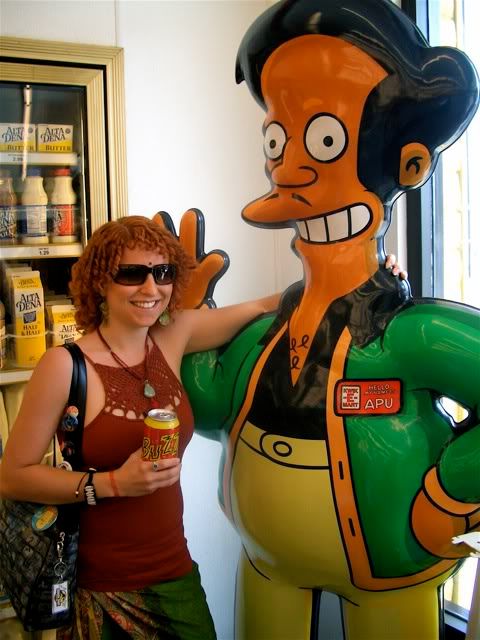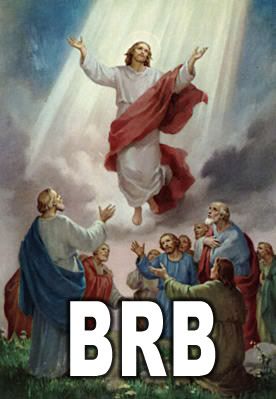-Aishwarya Rai Bachchan

Fig.1 Aish & her dreamboat, er, husband, Abhishek
Naturally, when it came time that I wanted to learn more about Buddhism’s parent religion, I turned to the movies. Luckily, the great Hindustan (“Land of Hindus,” or more archaically, “Land of the Indus River”) has a glut of source material, along with an entire industry dedicated to disseminating its motion picture culture outside its borders for the comfort of all the NRIs (Non-Resident Indians) and curious film buffs out there.
It wasn’t until my third year at college when I finally saw my first Bollywood movie. It was Mission Kasmir, starring the buff and handsome Indian superstar Hrithik Roshan and super beautiful actress Preity Zinta. Just how distracting is Hrithik’s super handsomeness? He’s so hot that it took me years to realize he has an extra thumb on his right hand. And it’s a pretty serious thumb, too, not some measly little bugger. It’s possibly the most famous digit in history. He’s THAT hot.

Fig.2 War is hell, but Hrithik is hella HOT
Mission Kasmir is the story of a young boy whose parents were killed by police, and he gets adopted by one of the sympathetic officers involved. When the boy grows and up discovers the dark secret, it’s time for revenge, but not without involving a pretty girl and a tragic political backdrop of the ongoing military discord in the contested Kasmir region of South Asia.
To my unenlightened eyes, it was a non-stop, sometimes confusing amalgamation of Jean-Claude Van Damme-like action-adventure, 50s-era MGM Hollywood romance, and high drama interspersed with random but beautiful singing and dancing numbers. The acting was intense and anything but subtle while the locations were exotic and totally new to my American moviegoing sensibilities.
The night my world film class met to watch that movie, I checked my voicemail at the intermission and got a message from my mother. I called and she told me that she had something important to say, but didn’t want to tell me while I was at class. I immediately left and rode my bike across the dark campus to my dorm room and called her back to find out that my grandfather had died. Mercifully, a minute later, my dear friend Elissa knocked on the door and gave me hugs while I spoke to my father. At some party a few nights before, Elissa’s friend Nicky gave me a beer and I saved it in my mini fridge. I used it to calm down and my Dad and I toasted to my grandpa over the phone.
Despite the unfortunately sad association with my first experience of Bollywood, the call of the exotic eventually drew me back full-force.

Fig.3 The most exciting cricket has ever been
One summer, Elissa took me to free bellydancing classes on campus and got me some CDs with the practice music, and I fell in love with it. This new interest paved the way for me to investigate all things Eastern.
Soon after coming home from graduation, I found myself back in a town very much lacking in the video store department. Gainesville had plenty of Blockbusters, Hollywood Videos, and movie theatres that played independent films. There was even one at the student union a five-minute walk from my dorm that screened second-run flicks at discount prices. Add all the free screenings of obscure foreign stuff I went to as part of my film classes and you can see how heavenly things were for me.
When I had to leave all that, the online rental service revolution was just going mainstream. As soon as I realized how logistically and economically ridiculous it was to drive to the store and rent DVDs at 4 dollars a pop, I signed up for Blockbuster Online. A vast DVD collection was at my disposal. I’d watch at least three a week, and at only fifteen bucks a month, it was obviously stupid NOT to sign up. After a while the Blockbuster system made too many mistakes and took way too long, so I switched to Netflix and lived happily ever after.

Fig.4 Shah Rukh Khan and Sushmita Sen in Main Hoon Na, a Farah Khan classic
Consumer advertisement aside, Netflix has proven to be a Bollywood fan’s best friend. The large and varied collection of Hindi language movies was available at my whim, so I immediately learned to worship Indian stars as the Indians did.
The first thing you learn from Hindi-language films is that the Indians really love American movies. They not only produce their own re-mixed versions of their favorite big Hollywood flicks, they constantly reference dialogue, scenes, and characters that we Americans know and love. It’s easy for people to mistake this tendency as unoriginal, the results being cheap “rip-offs,” but Indian filmmakers are just like the French Nouvelle Vague directors of the 1950s. Their art is significantly reactionary to American cinema.

Fig.5 Some of their favorites are The Matrix. And Star Wars. Can you tell?
Everything is a loving homage to what they see in the Hollywood craft, and they most definitely inject their spicy, colorful flavor to the mix, resulting in a hyper-real experience. Bollywood films more often than not deliver a more heightened sensual and emotional experience than Hollywood does. What we call “too much melodrama” in their performances is really just a more stage-inspired “pre-Method” (almost DelSartean) style of acting in which all emotions are exaggerated for greater emotional impact. And boy, does it work.
The highly successful and popular Dhoom franchise is basically Bad Boys plus sexy music videos. Mere Yaar Ki Shaadi Hai is literally My Best Friend’s Wedding, plus sexy music videos. Moulin Rouge, with its high drama, zany comedy, romance and costumes interspersed with pop music and beautiful settings is actually the closest thing to Bollywood any average American has seen. Sorry, but Bend It Like Beckham doesn’t cut it. Slumdog Millionaire is not your standard “masala” movie. The “Jai Ho” item song in Slumdog is the only thing remotely Bollywood in the entire thing. If Bride & Prejudice weren’t in English… then we’d be cookin’.

Fig.6 I'm crossing my fingers for Dhoom 3
Although more recently, some Bollywood filmmakers (Mani Ratnam in particular, who seems to have a crush on the delicious Abhishek Bachchan) have been experimenting with more realism and grit in their films (Yuva, Rang De Basanti, Sarkar, Guru, Kaminey etc.), the escapist cinema still dominates the industry (Main Hoon Na, Dhoom 2, and the ultimate escapist spectacular Om Shanti Om).
The second thing you learn from Bollywood movies is that religion is everywhere. And it isn’t sublimated into non-denominational themes and motifs, but presented on a golden platter, as simple to pick up as ladoos and samosas. Hearing the many terms for God being dropped all over the place in every genre of film—not just the spiritual ones—was a new experience.

Fig.7 Grit and music actually pair well together
to be continued...
















